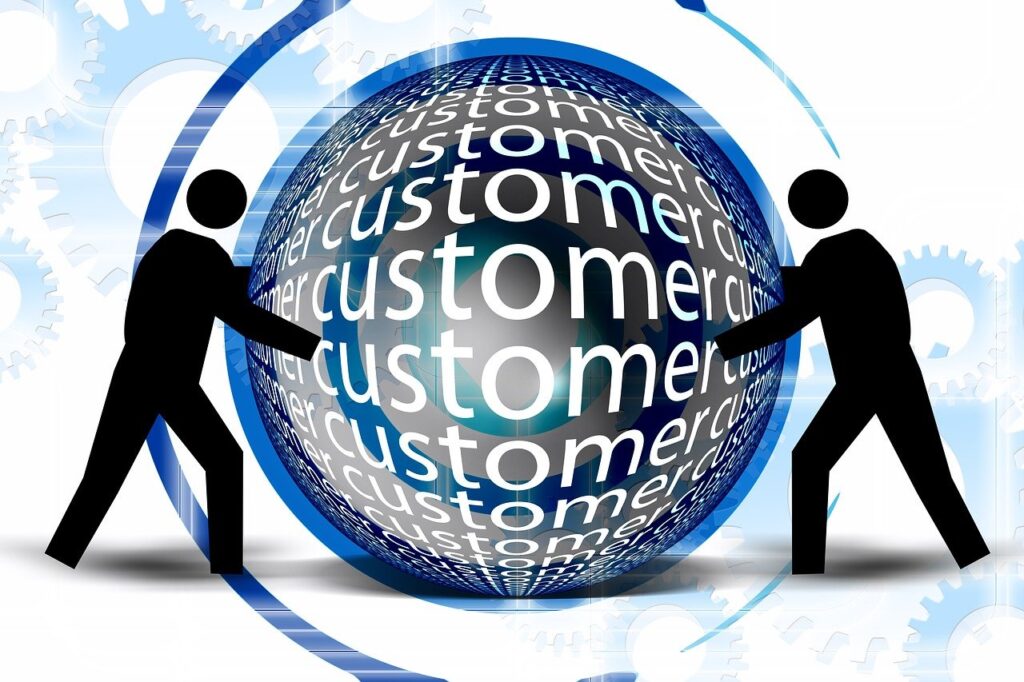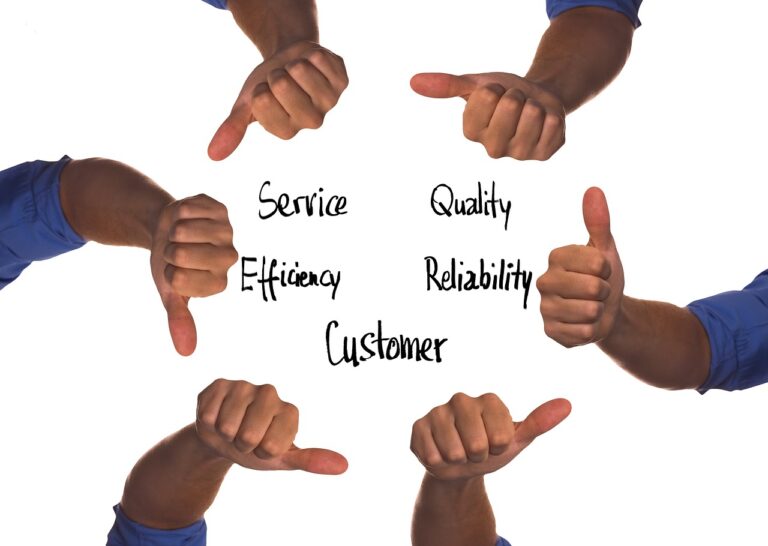Introduction: Why Customer Retention Is the True Engine of Growth
In the startup and business ecosystem, customer acquisition often gets the spotlight. Founders, marketing teams, and investors focus relentlessly on acquiring new customers, scaling outreach, and boosting user sign-ups. However, what frequently goes unnoticed is the quiet power of customer retention. Retaining customers isn’t just a secondary metric—it is a primary driver of sustainable, long-term growth. Studies have shown that increasing customer retention by just 5% can increase profits by 25% to 95%. Yet many companies are still designed like leaky buckets—pouring in new customers at the top, while old ones quietly fall out from the bottom. Retention is what separates high-churn, low-profit companies from enduring, profitable businesses. For startups in particular, who often operate with limited budgets and resources, customer retention strategies can make or break their long-term viability. It’s cheaper to retain existing users than acquire new ones, and loyal customers tend to buy more frequently, refer others, and become brand advocates who market your product for free. In this article, we’ll explore the key strategies companies can use to retain customers and fuel meaningful, long-term growth that doesn’t rely solely on acquisition spend.
Understand Your Customer Journey Like a Scientist, Not Just a Seller
One of the foundational pillars of retention is deep customer understanding—not just who your customers are demographically, but what they’re trying to achieve, where they get stuck, and what value they expect from you at each stage of their journey. Start by mapping the customer journey end-to-end, identifying not only the onboarding and purchasing stages but also the usage, renewal, referral, and support interactions that define long-term engagement. Behavioral analytics tools, customer interviews, and journey mapping exercises can uncover friction points where customers tend to drop off. Use data to analyze key moments of delight or disappointment. If a SaaS platform sees drop-offs after trial expiration, or if an e-commerce store sees churn after the second order, these are golden opportunities for intervention. The companies that win at retention are those that think like user experience scientists—constantly collecting qualitative and quantitative feedback, iterating on user touchpoints, and removing friction proactively. This understanding isn’t static. It evolves over time, and startups must invest in learning loops that help them keep their fingers on the pulse of customer behavior.
Onboarding Isn’t a Step—It’s a Strategy
First impressions shape long-term behavior. If a user or customer doesn’t find value quickly, they’ll churn silently. This is why onboarding is not a checklist; it’s a strategic opportunity to deliver your value proposition in a meaningful, frictionless, and even delightful way. The most successful startups treat onboarding like a core feature. They build dynamic, personalized flows that guide users to their first “aha” moment as quickly as possible. For a productivity app, that might be completing a task. For a fitness app, that could be finishing the first workout. The shorter the time to value, the greater the retention. But great onboarding doesn’t stop after one session. It continues over time with contextual nudges, tooltips, check-ins, or even customer success outreach. Personalized onboarding—based on industry, goals, or usage data—can dramatically increase engagement. Moreover, if users get stuck or overwhelmed, even for a second, they are likely to abandon your product. Effective onboarding also involves helping users avoid confusion and supporting them through human and automated assistance. Every friction point removed in onboarding has a compound return in retention metrics.
Build Emotional Loyalty Through Unexpected Delight
Customer retention is not purely a logical equation. It’s also deeply emotional. Customers stay with brands that make them feel seen, appreciated, and understood. This emotional loyalty isn’t built through discounts or loyalty points alone—it’s built through moments of unexpected delight, personalization, and empathy. Brands that retain well invest in human touch: a handwritten thank-you note, a personalized email on the anniversary of signup, proactive support when something breaks, or surprise upgrades that make the customer feel special. This builds trust and emotional equity over time. Emotional loyalty also comes from aligning with a customer’s values. When customers feel your brand stands for something they believe in—whether that’s sustainability, empowerment, or simplicity—they are more likely to stay. Strong brand narratives and founder stories also contribute to this bond. Customers aren’t just buying a product; they’re buying into a story and a promise. Smart brands invest in small gestures that compound emotional equity, because in a crowded market, products can be copied, but emotional relationships are hard to replicate.

Retention Through Continuous Product Education
Many customers churn not because your product isn’t valuable, but because they never learned how to use it fully. Ongoing product education is one of the most underleveraged customer retention strategies. Smart companies design content not just for acquisition, but for activation, depth of use, and advanced capabilities. This might look like in-app tutorials that evolve over time, monthly product webinars, customer success workshops, or even personalized “Did You Know?” emails that highlight underused features. Education isn’t just a feature—it’s part of your value delivery. As your product evolves, your customer’s knowledge should evolve too. If you launch new features or change workflows, but don’t explain those changes effectively, you risk alienating long-time users. You should also segment educational content based on user type—what a power user needs is different from what a new user needs. The best retention teams treat education as a lifecycle commitment, not a one-time blog post or help doc.
Win Back Lost Customers with Empathy and Incentives
Even the best companies lose customers. But smart companies don’t let that be the end of the story. Win-back campaigns are a powerful retention tool when done right—not through spammy emails, but through personalized outreach that acknowledges the past relationship and invites re-engagement with genuine value. First, understand why the customer left. Was it pricing? Was it lack of features? Was it poor onboarding or weak support? Segment your churned users based on these reasons and craft reactivation strategies accordingly. For instance, a “We’ve Improved Since You Left” campaign that highlights new features, or a “Let’s Start Fresh” onboarding refresh, can reopen doors that seemed permanently closed. Timing also matters—reach out after 30, 60, or 90 days with a relevant offer. Win-backs should be empathetic, not aggressive. Acknowledge their experience, show what’s changed, and extend an invitation—not a hard sell. Often, churned customers return more loyal than before, if their pain points were genuinely addressed.
Invest in Community and Belonging, Not Just Support
Support solves problems. Community builds belonging. If you want customers to stay long-term, give them more than a service—give them a place where they feel seen, supported, and connected. This is especially relevant for SaaS, health, education, and creative tools where peer interaction can drive accountability, discovery, and deeper engagement. Great communities include online forums, exclusive Slack or Discord groups, regular user meetups, AMAs with the founders, or even co-creation programs where customers shape product features. When customers become part of a community, they no longer see themselves as users—they see themselves as stakeholders in your mission. Community creates network effects. The more active your user community, the more value your product offers beyond its core features. Strong communities reduce churn, increase referrals, and turn passive users into evangelists. Building this takes time and moderation, but the retention ROI is immense.
Use Proactive and Human-Centered Customer Support
Support is not just about fixing bugs or answering tickets—it’s about demonstrating to the customer that they matter. Customers are more likely to stick with a company that supports them quickly, empathetically, and proactively. This means fast response times, human tone, and channels that meet the customer where they are—email, live chat, phone, or even WhatsApp. But great support goes beyond reactivity. Proactive support involves reaching out when something breaks, checking in after a bad experience, and even warning customers before they encounter known issues. Support should also be equipped with customer history and preferences, so users don’t have to repeat themselves. Empower your support team to make things right—not just route tickets. Support should not feel like a cost center; it should feel like a retention engine. Every interaction is a chance to build trust—or lose it.
Customer Advisory Boards: Co-Creation as Retention
One of the most underutilized yet high-impact customer retention strategies is the formation of Customer Advisory Boards (CABs). These are not traditional focus groups but strategic forums where your most loyal and influential customers are invited to contribute to your roadmap, weigh in on product decisions, and share candid feedback about their ongoing experience with your brand. When customers feel like co-creators instead of mere consumers, their emotional commitment to your company deepens exponentially. This advisory involvement also builds trust, strengthens long-term loyalty, and positions the customer as a strategic partner rather than just a user. It becomes especially powerful in B2B and SaaS industries, where product evolution must closely align with user needs and market shifts. CABs convert passive retention into active brand stewardship—where the customer feels a sense of ownership over your success and, by extension, their continued involvement with your offering.
Emotional Intelligence in Customer Support: The Underrated Differentiator
While many retention strategies focus on data, discounts, and digital touchpoints, few emphasize the human emotional layer—the quality of empathy and emotional intelligence embedded in your customer support and communication teams. The way your support team handles a frustrated user, an unexpected delay, or even a confused first-time buyer can either create a lifelong advocate or a fast churn. Training your customer-facing staff in emotional intelligence—active listening, empathy-driven communication, non-reactive conflict resolution, and proactive problem-solving—creates a differentiated experience that makes customers feel genuinely cared for, not just processed. Startups that infuse their culture with these human-centric principles often enjoy much higher Net Promoter Scores (NPS) and organic word-of-mouth retention. In today’s increasingly automated world, a dose of authentic empathy can be a radical retention tool.
Customer Win-Back Campaigns: A Goldmine of Second Chances
Many companies invest heavily in acquiring new customers but ignore a powerful opportunity: winning back old ones. Former customers already know your brand, have interacted with your product, and left for a reason—which you can learn from. Designing a structured Customer Win-Back Strategy allows you to analyze churned users, segment them based on why they left, and approach each group with tailored messaging, revised offers, or improvements to previously unmet expectations. Offering special incentives, demonstrating key feature upgrades, or simply apologizing for previous shortcomings can often reignite the relationship. In fact, studies show that win-back campaigns have a higher ROI than first-time customer acquisition campaigns, because you’re working with people who already entered your funnel once. A startup that treats its past users with the same respect and data-driven care as new users can unlock long-term growth from what others dismiss as lost leads.
Micro-Engagements That Build Macro Loyalty
In the race for long-term retention, many startups overlook the significance of consistent micro-engagements—those small, low-effort, high-emotion touchpoints that continuously nudge customers to feel connected to the brand. While large campaigns, loyalty programs, or onboarding journeys are commonly prioritized, it’s the subtle and unexpected forms of engagement—like a thoughtful birthday email, a behind-the-scenes product update video, or a personalized thank-you note from the founder—that create disproportionate impact. These moments may seem minor in isolation, but collectively they generate a sense of being remembered, respected, and individually valued. Micro-engagements, when strung together intentionally, form an emotional thread that customers subconsciously begin to associate with the brand—making it harder to leave, even when presented with competitive alternatives. Startups that embed automated, intelligent micro-engagement loops across the customer journey are not just building loyalty—they’re creating emotional gravity.
Silent Attrition Monitoring and Preemptive Interventions
Not all customers churn loudly. In fact, some of the most damaging losses come from silent attrition, where users gradually disengage without voicing dissatisfaction. Their logins become less frequent, their feature usage declines subtly, or their time-on-platform dips incrementally—until one day, they vanish. Traditional retention strategies often miss these invisible cues, treating all churn as post-mortem events. Smart startups, however, are now investing in behavioral analytics and machine learning models to detect early warning signs of disengagement. This proactive posture enables preemptive interventions, such as sending helpful nudges, offering personalized incentives, or launching re-engagement campaigns before users fall off the cliff entirely. By viewing disengagement as a progressive disease rather than a sudden death, startups can transform their retention systems from reactive to preventive—turning near-losses into reactivations and learning from quiet signals rather than waiting for loud exits.
Internal Alignment Around Retention as a Culture, Not a Department
One of the most overlooked aspects of sustainable retention is that it cannot be siloed into a department or reduced to metrics on a dashboard—it must be a company-wide culture. Startups that excel in customer retention don’t treat it as the responsibility of just the support or marketing teams. Instead, product managers are incentivized to build with retention in mind; engineers write code for performance consistency and ease-of-use; the sales team sets expectations that align with actual product capabilities; and leadership makes long-term customer health a core OKR. When every department sees their work as part of a unified customer experience—one that either encourages repeat engagement or pushes users away—retention becomes a collective discipline. Culturalizing retention means aligning incentives, communications, and KPIs across the startup around the idea that keeping a customer is not cheaper than acquiring one—it’s more valuable. Companies that operate from this belief naturally bake retention into every layer of their strategy.
Conclusion: Retention Is the Growth Strategy That Pays Compounding Dividends
In the race to grow fast, it’s easy to get caught up in the glamor of acquisition—the big ad budgets, the viral launches, the flashy funnels. But true, lasting growth is rooted in retention. It’s in the customers who come back month after month, year after year. It’s in the referrals they make, the upgrades they buy, and the trust they build. Retention is not just a metric—it’s a mindset. It requires companies to focus not just on getting attention, but on earning loyalty. It calls for empathy, not just efficiency. It demands that businesses go beyond transactions and build relationships. As markets saturate and acquisition costs rise, the startups and businesses that thrive will be the ones who obsess not over their first sale—but over their hundredth. Long-term growth doesn’t come from constantly chasing new customers. It comes from building a product and experience so good, your existing customers never want to leave. If you’re serious about growth, get serious about retention—because that’s where the real magic happens.
In a business environment where acquisition costs are soaring and customer attention spans are dwindling, the true battleground for sustainable growth has quietly shifted from the noisy arenas of lead generation and virality to the often-overlooked domain of customer retention. What many startups fail to realize until it’s too late is that building a product or service that customers try once is no longer enough; the real test is whether those customers come back, again and again, without needing to be constantly re-won. Retention isn’t just a metric or a line on a dashboard—it’s a living, breathing relationship that must be cultivated with as much rigor and intentionality as user acquisition, if not more. And unlike fleeting marketing campaigns or short-lived growth hacks, customer retention strategies have compounding effects. Every returning customer isn’t just another sale; they are a signal of brand trust, product-market fit, and emotional resonance.
Customer retention is not the job of one department—it’s the consequence of everything your startup does. From the first welcome email to the last support ticket resolution, every interaction is a vote of confidence the customer casts—or withdraws. Long-term growth stems not from one-time persuasion but from recurring relevance. Startups that understand this begin to design with retention as a foundational principle, not a retrofitted tactic. They build onboarding flows that are intuitive and emotionally engaging, they personalize interactions at scale, and they use data not only to sell more but to serve better. They recognize the signals of dissatisfaction before they explode into churn. They reward loyalty, not just with points or perks, but with progress—by continually improving the value they offer over time. And most importantly, they see every customer not as a transaction but as a long-term partner in growth.
True retention is forged not in broad strokes but in nuances: the subtle delight in discovering a feature you didn’t know existed, the relief of fast and human customer service, the satisfaction of watching your journey with the product evolve. These are the moments that cement loyalty, that turn customers into advocates, and users into ambassadors. As competitive pressures mount and startup ecosystems grow more saturated, the businesses that thrive will be those that treat their existing customers as assets, not just outcomes. Growth is no longer just about how many new users you acquire—it’s about how many you can keep, how deeply you can serve them, and how effectively you can make them feel seen and valued.
In the final analysis, retention is not merely a growth strategy—it’s the core philosophy that determines whether a business can transcend startup status and evolve into a lasting company. It’s a commitment to long-term thinking in a short-term world. And for those bold enough to embrace it, customer retention becomes more than just a strategy. It becomes the ultimate competitive advantage—the silent engine of compounding growth.


